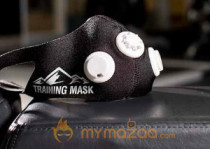Cyclists and long-distance runners have historically trained at higher altitudes (between 6,000 and 10,000 feet above seas level) then returned to sea level to improve their athletic performance. But if you’re not into climbing Mt. Everest, could a high altitude masks offer the same benefits?
We recently got this question from a viewer:
Dear Dr. Manny,
I was running around Central Park in NYC and saw a bunch of runners wearing elevation training masks. I read athletes use them to build up their lung capacity and improve endurance, but do they really work, and are they safe to use?
Thanks, Jack
At a higher altitude, the amount of oxygen in the air is reduced, and your body compensates for this by producing more hemoglobin— the protein in red blood cells that transports oxygen to tissues to create energy for your body. Over time, training at high altitudes is thought to create more hemoglobin in your body so that when you return to sea level, those extra red blood cells continue to carry more oxygen to your tissues and thus give you more energy to push yourself harder for a short period of time. However, studies suggest this extra boost lasts only for about 15 days before it fades and normalizes.
Some elevation masks stimulate altitude training by making your body work harder to breathe. Theses masks use a valve system to reduce the amount of airflow to the lungs, which forces you to take deeper breaths. This is what's known as "restricted-air training" or "inspiratory muscle training."
When lungs are pushed to work harder, the surface area in the alveoli— the tiny air sacs where the lungs and the bloodstream exchange carbon dioxide and oxygen, get stretched— making more room for blood and oxygen to flow. But Dr. Len Horovitz, a pulmonoligist a Lenox Hill Hospital in New York, is skeptical of its stretching capability.
“You can’t really increase your lung capacity past a certain point,” Horovitz told FoxNews.com. It’s not completely elastic that you can keep stretching it like taffy. There is a limit.”
The idea behind the mask’s efficacy is that over time your lungs will adapt to this type of air resistance and use available oxygen more efficiently— and, as a result, increase your lung capacity and aerobic thresholds, too.
“The Training Mask 2.0 improves fitness and athletic performance by applying peripheral air resistance to inhaled air via six different elevation-resistance flux valve settings. The added load from this air resistance strengthens the respiratory musculature.











